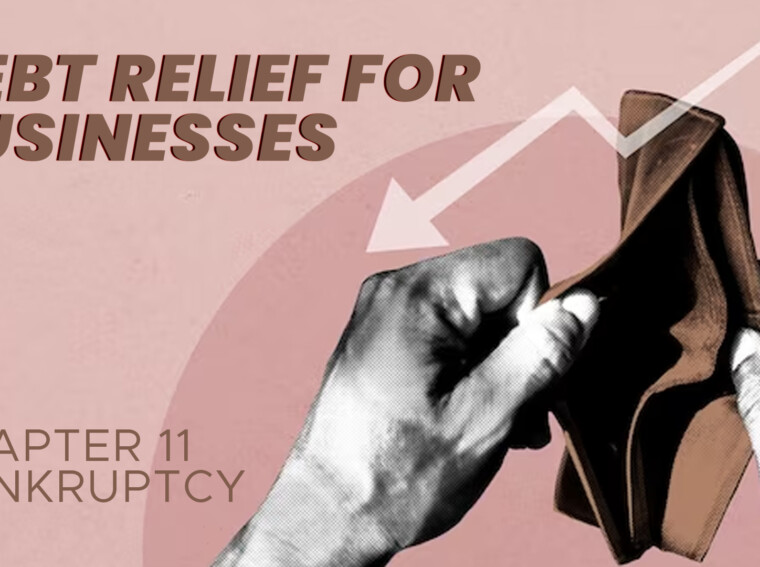- Bankruptcy is the state where an individual or a company is relieved of their pending debts by the order of the court and, hence, given a fresh start to run their organization.
- Companies that file Chapter 11 do so to obtain time to restructure their debts and make a fresh start.
- If the debtor wants to benefit from the terms offered by the bankruptcy court, they need to fulfill their commitments as outlined in their plan.
- Asset preservation, satisfying creditors, operations continuity, and others are some of the objectives of Chapter 11 discussed thoroughly.
Chapter 11 Bankruptcy
Bankruptcy is the state where an individual or a company is relieved of their pending debts by the order of the court and, hence, given a fresh start to run their organization. Businesses often file Chapter 11 bankruptcy, intending to reorganize, remain in business, and once again become profitable.
Chapter 11 bankruptcy is a crucial legal avenue for businesses navigating financial turmoil. This chapter explores its vital role in helping distressed businesses by preserving assets, satisfying creditors, and enabling continued operations.
Working On Chapter 11
Chapter 11 bankruptcy serves as a lifeline for financially distressed businesses. Facing financial distress due to inadequate revenues, companies often turn to this process for recovery. Corporate debt restructuring, like debt-for-equity swaps, aims to reorganize outstanding obligations to creditors.
Through supervised reorganization, Chapter 11 enables struggling companies to submit a recovery plan outlining debt repayment strategies. During this process, the court assists in reshaping debts, while operations typically continue. Successful execution of the plan allows businesses to regain financial stability, benefiting both the company and its creditors.
In essence, Chapter 11 bankruptcy offers a chance for renewal, allowing businesses to address financial challenges, preserve operations, and work toward a brighter financial future.
Objectives Of Chapter 11
In this article, our primary focus will be on the various objectives of Chapter 11 bankruptcy, including preserving assets, satisfying creditors, and continuing operations and how these objectives collectively work to facilitate the successful restructuring and revitalization of financially distressed businesses.
- Asset Preservation
A central aim of Chapter 11 bankruptcy is safeguarding the debtor’s asset value. By halting creditor actions through an automatic stay, the process buys time for effective restructuring. Preserving asset value is pivotal, as it maximizes the potential for creditor repayment and enhances the chances of a successful reorganization.
This approach not only benefits the debtor but also maintains stakeholder confidence in the business’s prospects. Additionally, it prevents asset deterioration, which leads to reduced recoveries for creditors.
- Satisfying Creditors
Chapter 11 bankruptcy seeks to balance creditors’ claims with the debtor’s recovery prospects. Through a court-approved reorganization plan, the debtor outlines how it intends to restructure its obligations while continuing operations.
This plan ensures fair treatment of creditors by proposing adjusted repayment terms and potential asset sales. By aligning the debtor’s revival with creditor satisfaction, Chapter 11 fosters a constructive path toward financial stability for both parties.
- Continuity Of Operations
Sustaining business operations throughout Chapter 11 bankruptcy is a key goal. This objective safeguards employees’ livelihoods and sustains customer relationships. By allowing the business to continue operating, the chances of generating revenue to fund the reorganization plan increase.
Moreover, uninterrupted services or products assure customers, suppliers, and stakeholders that the company remains a viable entity, fostering trust and preserving its market position despite financial challenges.
- Reorganization Plan
The reorganization plan holds paramount importance in Chapter 11 bankruptcy. It serves as a comprehensive roadmap detailing how the business will restructure its debts and operations.
This plan outlines how creditors will be repaid, often at adjusted terms, and charts the course for the company’s post-bankruptcy functioning. Its approval by creditors and the court signifies a collective agreement on the path forward, ensuring the debtor’s revival and creditor satisfaction.
- Business Rehabilitation
Chapter 11 bankruptcy plays a pivotal role in rehabilitating distressed businesses by providing a structured framework for financial recovery. By granting the business time to reorganize its debts and operations, it aims to enhance efficiency, optimize resource allocation, and eliminate non-essential elements.
Through strategic restructuring, businesses can shed unsustainable burdens, optimize their operations, and emerge leaner and more competitive, ready to seize opportunities in the market with renewed vigor and financial stability.
Conclusion
- Chapter 11 bankruptcy embodies multifaceted objectives that address financial turmoil comprehensively.
- These objectives encompass asset preservation, creditor satisfaction, and operational continuity.
- Together, they create a symbiotic framework, preserving value, meeting obligations, and maintaining business functionality.
- This integrated approach empowers struggling businesses to navigate adversity, fostering value retention, financial recovery, and operational resilience.

